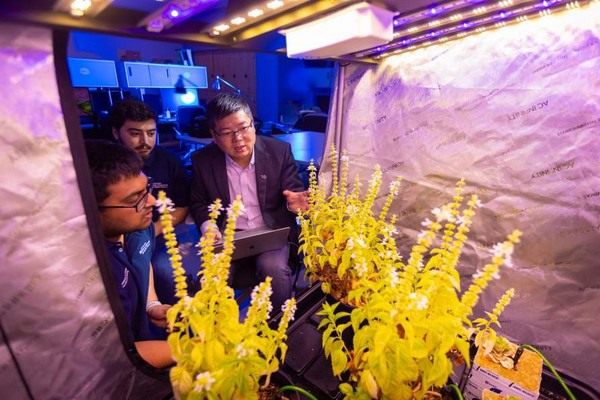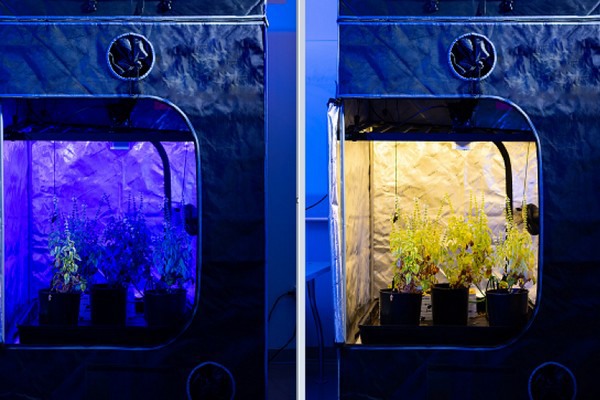Inside a nondescript computer lab at the University at Buffalo, a new tech-savvy style of indoor farming is blossoming.
Lettuce and basil are growing inside a phonebooth-sized greenhouse, all under the unflinching eyes of an artificial intelligence (AI) system designed to identify the faintest signs of sickness and distress among the plants.
The early detection of nutrient deficiencies, pests, and other problems – as well as the opportunity to optimize LED lighting programs that indoor farming operations rely upon – are the crux of a new research project at UB's Institute for Artificial Intelligence and Data Science.
 UB artificial intelligence researcher Jinjun Xiong, right, is working with local companies to advance the use of AI in indoor farming. Credit: Douglas Levere, University at Buffalo.
UB artificial intelligence researcher Jinjun Xiong, right, is working with local companies to advance the use of AI in indoor farming. Credit: Douglas Levere, University at Buffalo.
"At UB, we're focused on applying artificial intelligence and other technologies to solve society's greatest challenges," says the institute's director, Jinjun Xiong, PhD, SUNY Empire Innovation Professor in the UB Department of Computer Science and Engineering. "This project, which involves working with a pair of growing industries in Western New York, centers on food insecurity."
Partners in the project include Ellicottville Greens, which grows vegetables, herbs, greens, and other products in indoor vertical farms, and Buffalo-based Starco Lighting, which delivers LED lighting solutions to commercial and industrial customers.
The effort received a $50,000 grant from FuzeHub, a nonprofit organization that supports technology development and commercialization across New York State. The funding comes from its Jeff Lawrence Innovation Fund, which is supported by Empire State Development's Division of Science, Technology, and Innovation.
 The LED lights have multiple tunable channels to adjust the intensity of lights from different spectrums. Credit: Douglas Levere, University at Buffalo.
The LED lights have multiple tunable channels to adjust the intensity of lights from different spectrums. Credit: Douglas Levere, University at Buffalo.
Proponents of indoor vertical farming highlight how the industry typically uses less water and land than traditional farming. Vegetables and other products can also be grown closer to where they'll be sold to consumers, including communities where access to fresh, healthy food is lacking. All make for a potentially more sustainable model of agriculture, especially as climate change disrupts outdoor farming.
But the industry still has its challenges, most prominently the cost of monitoring plant health. The project at UB can address this by optimizing the indoor growing environment.
